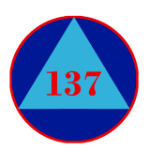
An Educated Collector is Our Best Client
In business for nearly two decades, we are a well established, popular contemporary art boutique specializing in expertly chosen, blue chip prints, multiples, uniques, books, ephemera and merchandise at different price points, with a focus on the secondary market. Please click on the "Contact Us" button at the bottom of this page for questions about any work, pricing and/or to arrange to visit our showroom/gallery - located in between Manhattan's Flatiron and Chelsea Flower Districts.
ALPHA 137 GALLERY
ALPHA 137 GALLERY
Description
Marilyn Was Here
This pencil signed lithograph is based upon an original drawing, which was Richard Lindner's homage to Marilyn Monroe, and the letter M on each side of the portrait represents her first and last initials. (The original drawing is reproduced and illustrated in the catalogue raisonne of Richard Lindner's Paintings, Watercolors and Drawings, Edited by Werner Spies, Prestel, 1999 (Plate 1521, page. 432)
This print is pencil signed, but it is unnumbered, so we don't know how many there were. Other than this very one, we ourselves, haven't found another, so it appears to be either quite scarce, or possibly a monoprint. (edition unknown)
Frame included: elegantly floated and framed in a hand made museum quality wood frame with UV plexiglass
Measurements:
Framed:
19.75 inches vertical by 17.75 inches by 1.5 inches
Artwork:
13 inches by 11 inches
Richard Lindner Biography:
The life of the painter Richard Lindner, who was German by birth and American by adoption, is particularly relevant to his entire oeuvre. Born of a German Jewish father and an American mother, Lindner spent his youth in Nuremberg, Dürer’s city, and trained as an artist at the Kunstakademie in Munich. During his formative years he was particularly impressed by a visit to the collection of paintings by the mentally disturbed amassed by the psychiatrist and art historian Hans Prinzhorn at Heidelberg University.
During 1927 and 1928 Lindner lived in Berlin, where he witnessed the development of the Neue Sachlichkeit (New Objectivity), a movement that left an indelible mark on all his subsequent paintings. In 1929 he returned to Munich, where he married his classmate Elisabeth Schülein and began to work as artistic director for the important firm of publishers Knorr & Hirth. When Hitler came to power, Lindner, like so many other German Jews, abandoned his home country and went to live in Paris, where he continued to work as a graphic designer until 1939.
In 1941 Lindner emigrated to the United States and settled in New York, where he began to contribute illustrations to the magazines Fortune, Vogue and Harper’s Bazaar and soon became the most fashionable graphic designer. Despite being granted American nationality in 1948, Lindner never felt fully American, though he did consider himself a New Yorker. It was precisely in New York where he took up painting comparatively late in life, in 1952. The free and cosmopolitan lifestyle of the legendary American city awakened his artistic talent and the subjects of his paintings — gangsters, prostitutes or people from the theatre, circus or music hall — were inspired by the underworld around Times Square or taken from American mass culture. At a time when Abstract Expressionism was all the rage, Lindner’s painting went against the current and always kept its distance. His pictorial language of vibrant colours and broad planes of colour and his urban themes make him a forerunner of American Pop Art. At the same time, he owes the critical tone of his paintings to the influence of European art movements such as Neue Sachlichkeit and Dada. His first exhibition did not take place until 1954, by which time he was over fifty, and, interestingly, it was held at the Betty Parsons Gallery in New York, a venue associated with the American Expressionists. He remarried in 1969; his second wife Denise Kopelman was a young French art student. Shortly afterwards the Lindners began to spend half the year in Paris. He started to earn recognition for his work in the 1970s.












